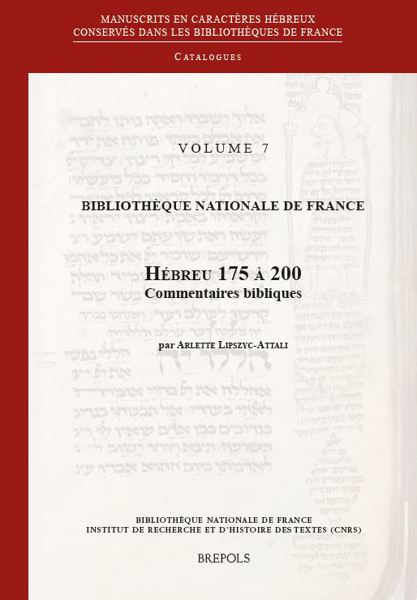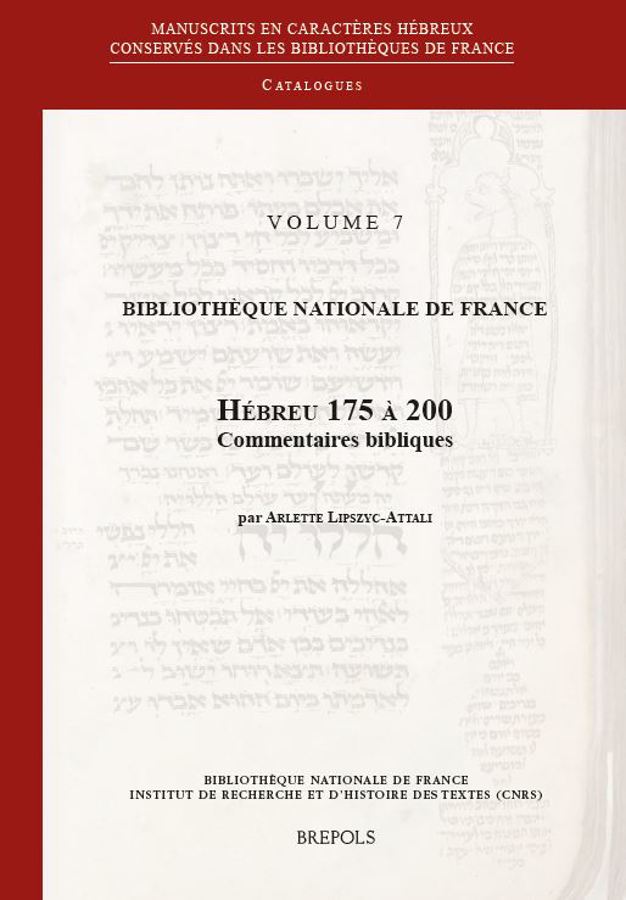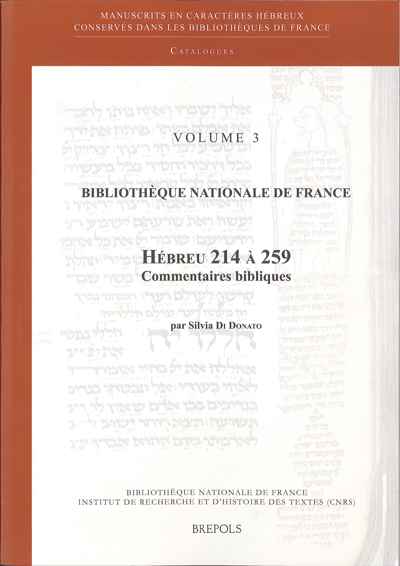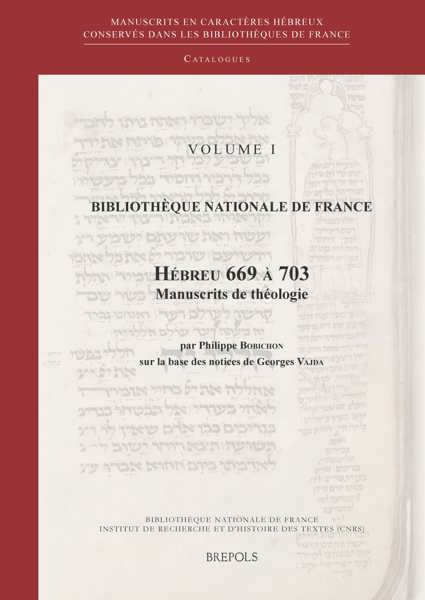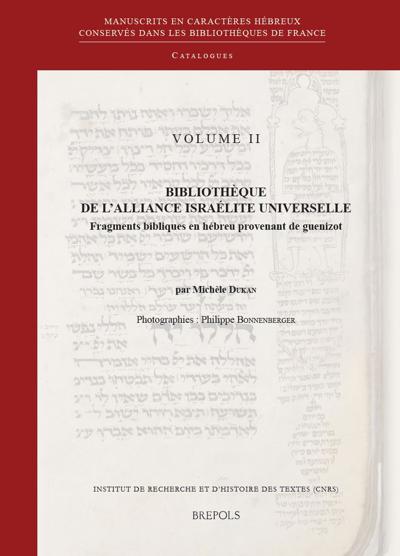
Bibliothèque nationale de France. Hébreu 175 à 200. Commentaires bibliques
Arlette Lipszyc-Attali
- Pages: 307 p.
- Size:210 x 297 mm
- Illustrations:94 b/w
- Language(s):French, Hebrew
- Publication Year:2015
- € 110,00 EXCL. VAT RETAIL PRICE
- ISBN: 978-2-503-55316-0
- Paperback
- Available
Etudes hébraïques : Diplôme de l'Ecole nationale des Langues orientales et Maîtrise à l'Université); Paléographie à la Section hébraïque de l'IRHT (de 1967 à 1975); Recherches en linguistique anglaise et française dans des Laboratoires du CNRS (de 1978 à 2008); participation au CMCH depuis 2008.
Ce septième volume de notre collection, le deuxième consacré aux Commentaires de la Bible conservés à la Bibliothèque nationale de France, décrit vingt-six manuscrits datant, hormis un seul, de l’époque médiévale.
Les copies sont de diverses provenances : neuf ont été produites en Italie, six dans l’aire byzantine, cinq en Espagne ou dans l’aire séfarade, deux dans l’aire ashkénaze, une en Provence, une à Constantinople.
Cette collection comporte un nombre important de copies des oeuvres de deux grands commentateurs qui figurent toujours dans les grandes Bibles rabbiniques : Abraham Ibn Ezra (dix manuscrits) et David ben Joseph Qimḥi (huit manuscrits).
D’autres exégètes sont également présents : Rashi, Lévi ben Gershom, Joseph ben Abba Mari Ibn-Caspi, Menaḥem ben Simeon de Posquières, Ḥananel ben Ḥushiel de Kairouan et Jacob ben Reuben (karaïte).
Comme c’est souvent le cas dans les manuscrits hébreux, certains de ceux qui sont ici décrits contiennent des textes d’une autre nature : traités de philosophie, de morale, d’astrologie, ou encore de sciences naturelles…
Dans toutes leurs dimensions, ces ouvrages témoignent de la richesse de la vie spirituelle, intellectuelle et culturelle des Juifs au Moyen âge, que ce soit en terre chrétienne ou d’Islam.
